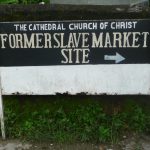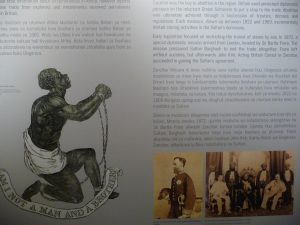Whether you agree with the concept of white privilege or not, it’s worth explaining white privilege. Or trying to. To do this, I’ll start by taking a look at the origins of the concept. By the way, I agree with the concept as a tool to understand unconscious biases in whites. But I disagree with using it to beat up on whites and lay guilt trips on them. Much of the guilt lays with people who set up social systems centuries ago in the US and even earlier in the case of slavery.
Explaining white privilege—slavery in the US.
Slavery’s a key factor people cite when explaining white privilege in America. For that reason, besides reading about white privilege and slavery, I’ve tried over the years to learn first hand about them.
In 1963 I visited Jackson, Mississippi where black activist Medgar Evers was assassinated. I then drove to Birmingham, Alabama where Klansmen had just used a bomb to kill 4 girls attending a Sunday School class. I subsequently drove around various school districts in Alabama where whites were demonstrating against integration efforts by the Feds.
Jumping ahead in time. In 2014 I visited sites in the American South known for their historic connections to slavery. The slave quarters at Boone Hall plantation— outside Charleston, S.C.—showed me the cold, cramped quarters slave families knew during the Andrew Jackson years.
A Boone Hall actress portraying a Gullah slave descendant explained that these quarters were typical for people who toiled on farms in rural areas. They were primitive compared to those I saw for household servants in urban areas like Charleston and Savannah (see Owens Thomas House pic below).

Explaining the Gullah, descendants of enslaved Africans.

Explaining white privilege: Slave quarters Owens Thomas House
However, I wanted to understand better the origin of this pernicious system. And so I traveled to the “island” of Zanzibar in Tanzania on the east coast of Africa. There—in a region called Stone Town—one of the world’s last slave-trading markets thrived. The East African Arab-Swahili slave trade was closed down by the combined efforts of Scottsman David Livingstone, Anglican crusader William Wilberforce, and others in 1873.
Explaining white privilege—slave trading in Zanzibar.
In literary writings and history, Zanzibar is often synonymous with exoticism, romance, and spices. The Zanzibar archipelago was once called the Spice Islands. However, a dark secret had underlaid the magical name. In some ways, Zanzibar was synonymous with slavey during its trading era.
Since pictures convey so much information, I’ll let them tell the story with only brief comments from me.

—Impossibly cramped underground chambers where slaves were held, chained to the floor, before being sold. Sign describes the horrors.

Slave chambers for women.

Slave chambers for men.

Sign at underground slave chambers.
—Several figures, connected by chains, memorializing the 60,000 men, women, and children sold here each year during the market’s heyday.

Slave Memorial

Memorial to slaves.
Museum illustrations documenting white privilege.
—The Slave Trade Exhibit in Stone Town shows stark images of the era.

Historic documentation of white privilege?


Slave trade ship.
—Occasionally, white women were enslaved as concubines, members of harems.

Sometimes, white women were enslaved.
—Most slave traders here were Arabs. Hence many slaves were sent to the Middle East, India, and Asia. Merchants were aided by
the Sultan of Oman who ruled Zanzibar.
—Slave trading merchants lived – and secured their riches – in mansions behind huge wood doors, fortified against even elephants.. Such merchants had chains carved into their doors to indicate their “trade.”

Doors to a trader’s home.

Door with “slave chain” motifs.
—Churches stand today upon the slave market site. They provide solace/community for many who are descendants of slaves.

Anglican Cathedral
This post has tried to show some of the history responsible for cementing in place the concept of white privilege (or white “dominance”/”superiority” as some say).
Of course, feel free to comment and express your own opinions on this important topic.
See my next blog post for a sociological —as opposed to historical—explanation of white privilege.
—
*The museum featured this story:
A slave accused a merchant of unjustly enslaving her. Evidence produced, slave freed, merchant fined, and slave given half the fine. When asked about how the compensation would be used, the slave answered at once, “I’ll buy a slave with it.”
Besides suggesting that humans have enslaved one another since time began, the Museum documented the enslavement that still exists around the world (e.g., sex slavery, child-labor slavery).
My latest book, PRIVILEGED KILLERS, is a true story about a half-dozen Dark Triad people in my everyday life - narcissists, manipulators, and psychopaths. Three of 'em murdered people, and one came after my wife and me. Print and e-book versions of this (and CLEFT HEART) available at Amazon and elsewhere online. Also at your local bookstore.
Leave a Reply